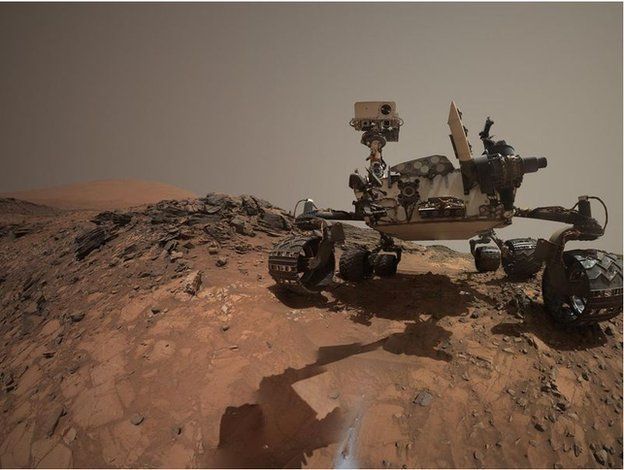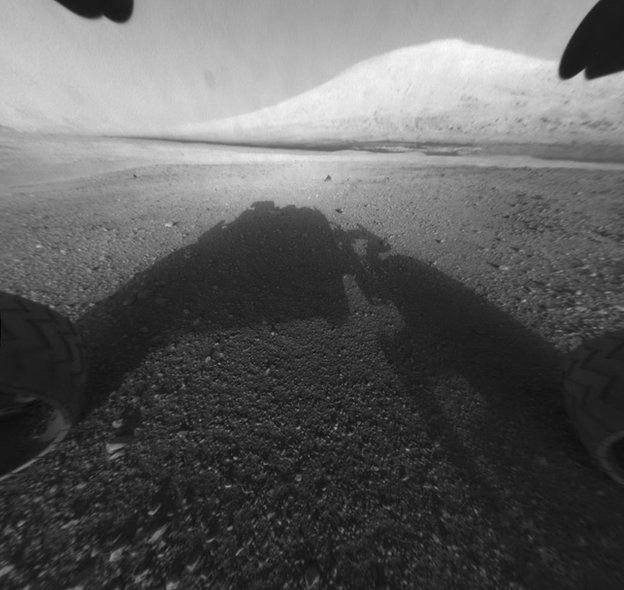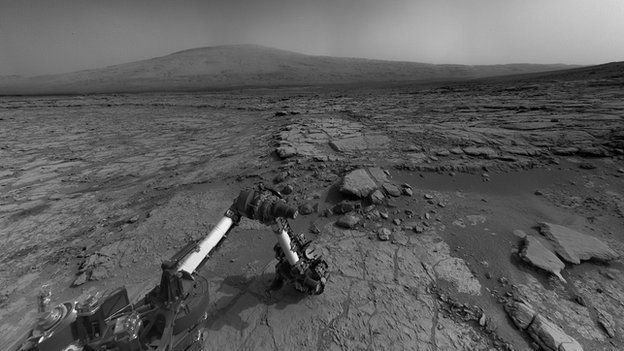'Curiosity rover'; A marvelous new information sent from Mars to earth

We call it Mars as the red planet.
NASA's Curiosity rover, which runs on the red planet's Gale Crater area, has completed two thousand on Mars.
At the same time, when the Curiosity rover, also known as the Mars Science Laboratory, performed a number of important observations.
Scientists from the Earth have discovered a number of new discoveries discovered by their observations, and a few are listed below.
The planet we live in (as shown in the picture above) is a glowing tiny star in the night sky.
The image is taken from a camera mounted on a Curiosity Rover robot.
Scientists around the world are conducting a Curiosity Rover every day, studying the Red Planet, about ten billion miles from Earth.

- Start: The above is the first photo sent to Earth on the 15th of August, 2012, when the Curiosity rover was landed on Mars.
- Stoning rocks on Mars River: After a day's roar on Mars, the Curiosity Rover could be seen on the river at the river or near its small stones.
- Old Lake: Prior to sending robots to Mars, such experiments were carried out by observing images taken from a high-tech camera using the MRO HiRISE (Space Exploration Experiment).
- Deep water: Curiosity rover roamed through the hillside of Pahrump Hills on its 753rd mile in the Gale Aviva region.
These photographs and information are determined by calculating the time that the Mars planet rotates around its orbit around the sun and the average time of a typical Mars day.
The above image is taken from the front of the Curiosity Rover front camera, usually used to avoid the obstacles encountered in robots on Mars. Scientists realized that tests on Mars would be successful as soon as the photo was received.

It is concluded that there was a very old, dried, shallow river.
Scientists conclude that the water flowed into the region that has been dubbed the Gale Crater from the hilly 400-year-old rock bell to Mars.
"Mastcam," a clear picture of the small stones, and the scientists hoped to see the tiny, stubstones of small rock giants before scientists began to experiment with Mars.
But the pictures confirm that they are not all dark.
Although they are usually found on the mountains, they have grown well according to mineral science.

But scientists were unable to draw the picture from the photos.
Are these small stones called "Lava"? Or sedimentary rocks? There was a state of the art that could not be clearly identified, and the newly discovered photographs made it possible to start a Mars experiment and draw conclusions.
Its Yellowknife Bay is made up of pristine mud and sand beds in the riverside Gale.
At the same time, scientists made their spacecraft on the Mars 180 on the spacecraft mounted on a rocket robot at the gondola robot robbed by a hole in a zone called John Klein.
As a result, clay, carbon and nitrogen mixtures could be found. This was a powerful testimony to the fact that microbials and bacteria were frequently found in the environment. Have Mars Life? The other important issues before us today.

The plane was a very slippery mound, and it was possible to see the muddy particles in the bottom of a deep river. It proved to be an ancient river with a deep moat.
